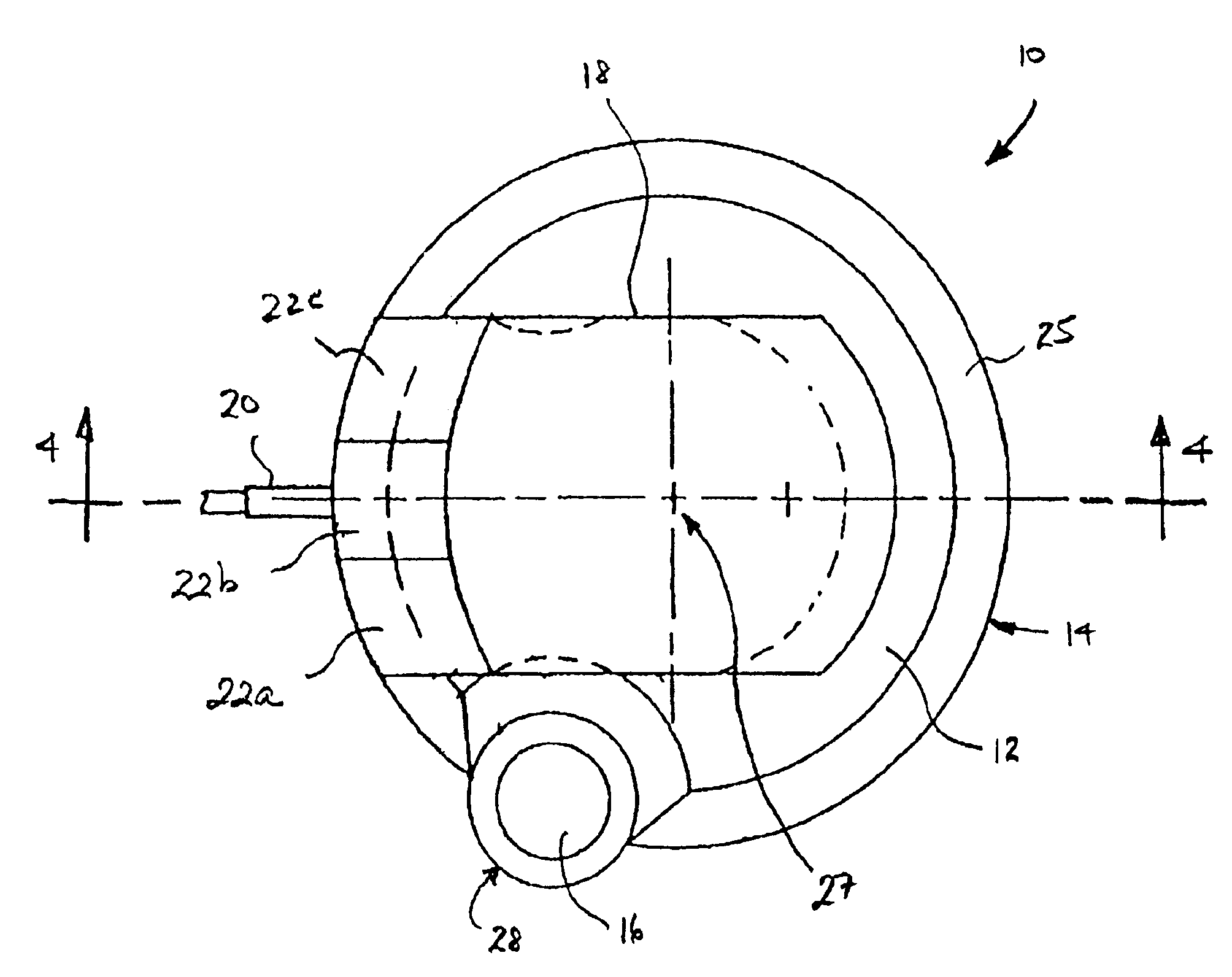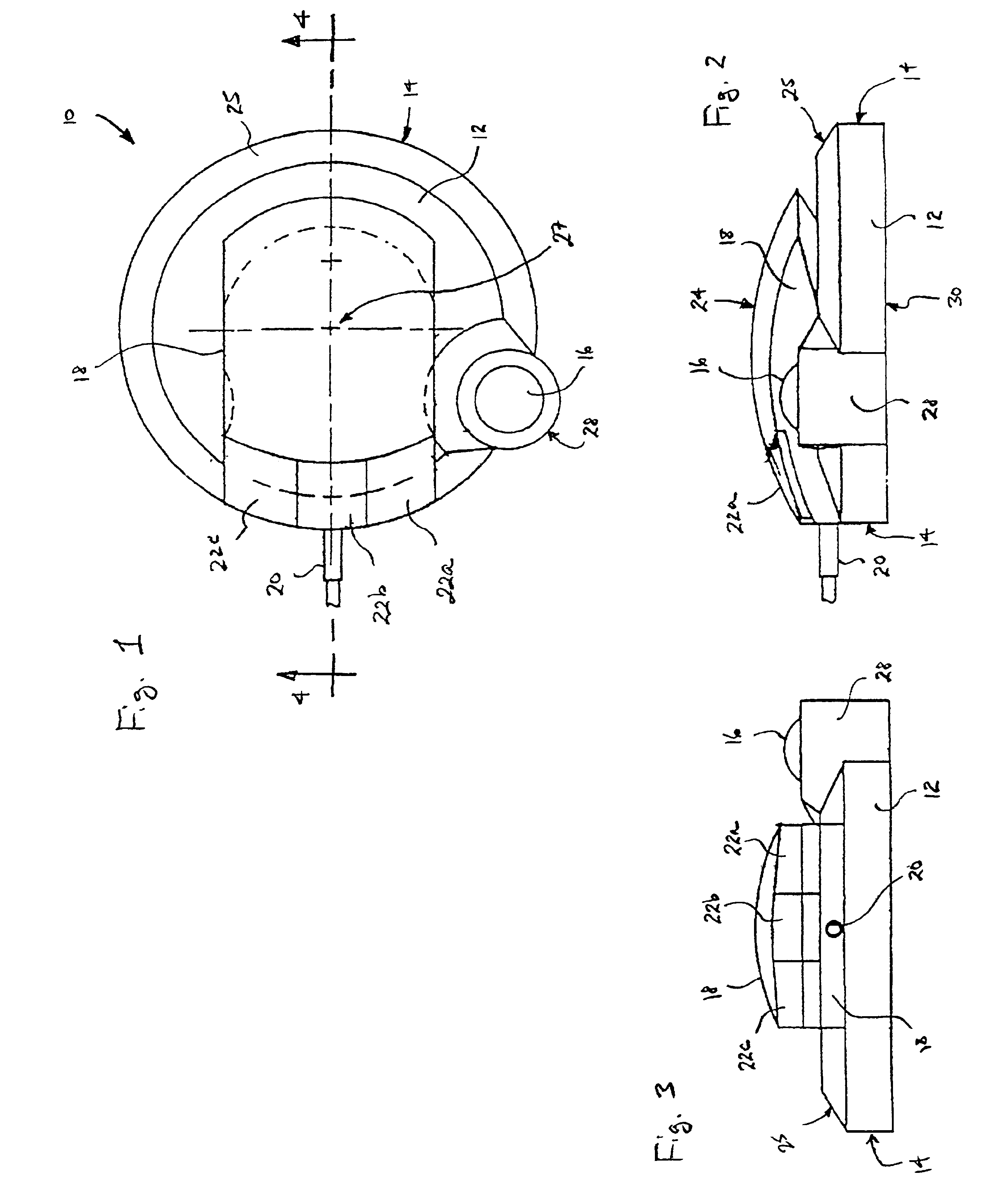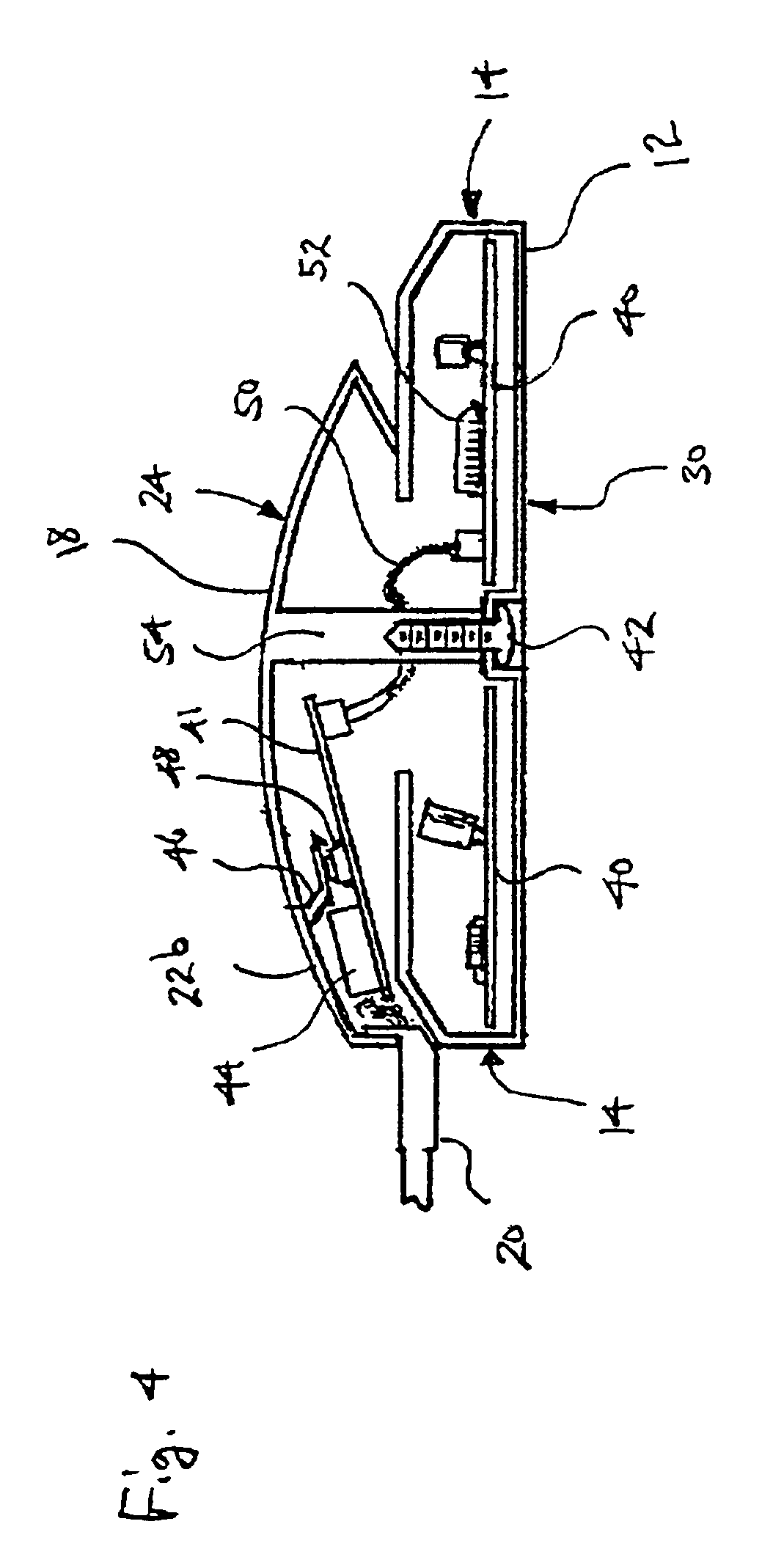Pointing device with biometric sensor
a biometric sensor and pointing device technology, applied in the field of pointing devices, can solve the problems of limiting access to adult activities, affecting the accuracy of pointing devices, etc., and achieves the effect of convenient use, immediate implementation, and easy us
- Summary
- Abstract
- Description
- Claims
- Application Information
AI Technical Summary
Benefits of technology
Problems solved by technology
Method used
Image
Examples
Embodiment Construction
)
Trackball Embodiments
[0029]FIG. 1, FIG. 2, and FIG. 3 illustrate a top view, a side view, and a rear view, respectively, of a trackball embodiment of the present invention. Referring specifically to FIG. 1, a computer trackball pointing device 10 includes a base 12 which is substantially circular in shape and has a generally circular perimeter 14. It is preferably approximately 6 inches in diameter, weighs approximately 2 pounds, and is constructed generally of heavy duty plastic, although other dimensions are plausible. A chamfered surface 25 is formed between the top surface of base 12 and the perimeter surface 14. A trackball 16 is mounted off-center on the base 12 within a housing 28 formed on the base at a location intersecting the generally-circular perimeter surface 14. An upper section 18 is connected to the base 12 and includes, for this embodiment, three user-depressable buttons 22A, 22B and 22C formed substantially on a top surface 24 of the upper section 18. An interfac...
PUM
 Login to View More
Login to View More Abstract
Description
Claims
Application Information
 Login to View More
Login to View More - R&D
- Intellectual Property
- Life Sciences
- Materials
- Tech Scout
- Unparalleled Data Quality
- Higher Quality Content
- 60% Fewer Hallucinations
Browse by: Latest US Patents, China's latest patents, Technical Efficacy Thesaurus, Application Domain, Technology Topic, Popular Technical Reports.
© 2025 PatSnap. All rights reserved.Legal|Privacy policy|Modern Slavery Act Transparency Statement|Sitemap|About US| Contact US: help@patsnap.com



